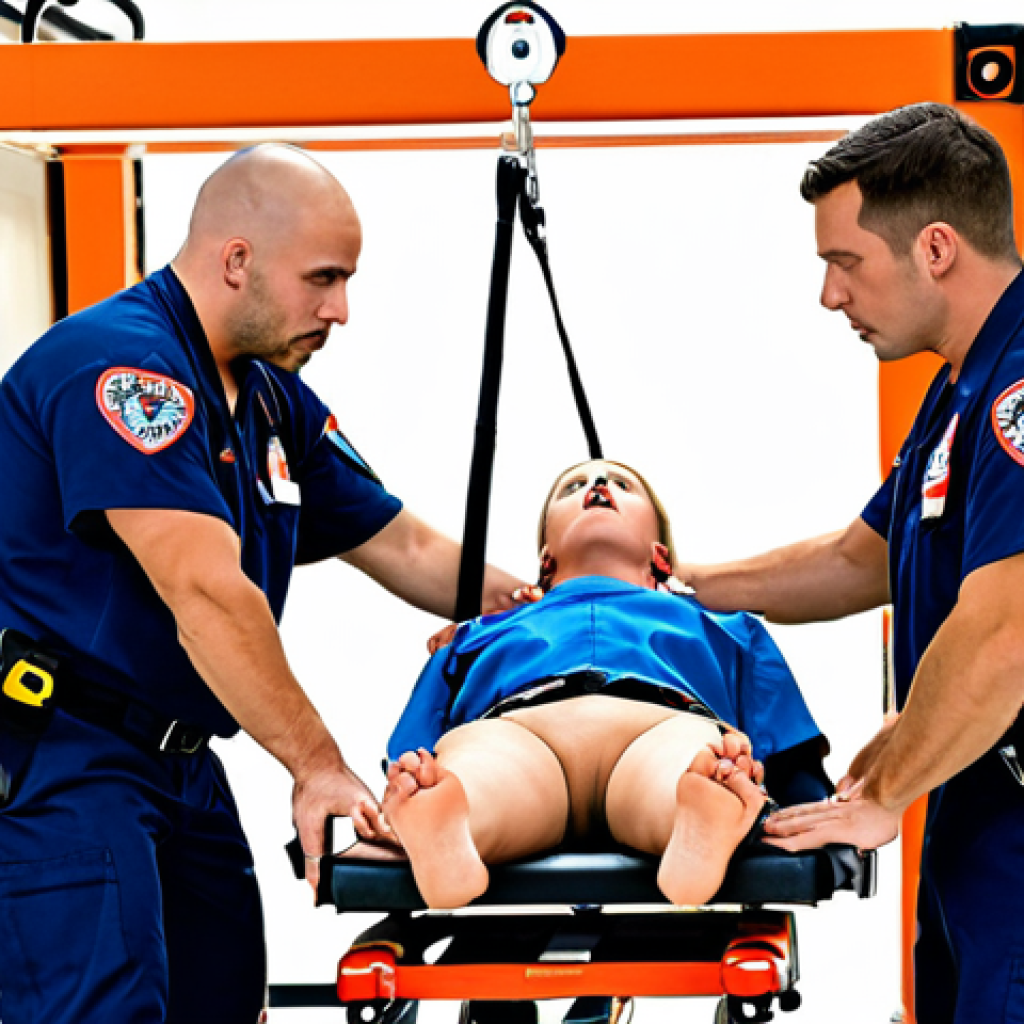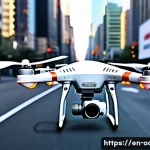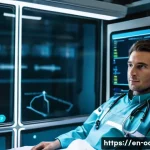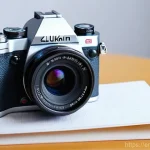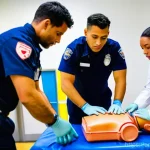Emergency medical technicians and paramedics are often the first responders on the scene of an accident or medical crisis. They play a vital role in assessing a patient’s condition and providing immediate care.
A crucial part of their job involves safely and efficiently moving patients, whether it’s from a chaotic accident site to an ambulance or within a hospital setting.
Proper patient handling techniques are essential not only for the patient’s well-being, preventing further injury, but also for the safety of the EMTs themselves, reducing the risk of back injuries and other work-related ailments.
Having witnessed firsthand the challenges faced during emergency situations, I understand the importance of mastering these techniques for both seasoned professionals and those just starting their careers.
The future of patient transfer will likely see advancements in ergonomic equipment and robotic assistance, but the fundamental principles of safe and effective movement will remain paramount.
Let’s delve deeper into the subject in the article below.
Mastering Safe Lifting Techniques

Understanding Body Mechanics
Safe patient handling starts with understanding and applying proper body mechanics. It’s not just about lifting with your legs – it’s about engaging your core, maintaining a straight back, and keeping the patient close to your body’s center of gravity.
I remember one instance where a colleague, rushing to assist an elderly patient who had fallen, neglected these principles. The result was a painful back strain that sidelined him for weeks.
We learned a valuable lesson that day: slowing down and focusing on proper form can prevent serious injuries. Imagine you’re picking up a heavy box – you wouldn’t just bend over and heave, would you?
The same principle applies to patient handling. It’s all about using your body efficiently and minimizing stress on your spine.
The Importance of Teamwork
Patient handling is rarely a solo endeavor. Often, it requires a coordinated team effort. Effective communication is key.
Before initiating any move, the team should clearly discuss the plan, assign roles, and ensure everyone understands their responsibilities. I’ve seen situations where a lack of communication led to confusion and increased the risk of injury for both the patient and the EMTs.
A simple “on the count of three” can make a huge difference in synchronizing the lift and ensuring everyone is working together. Furthermore, regular training sessions that incorporate team-based scenarios can greatly improve coordination and communication skills.
This not only enhances safety but also fosters a sense of camaraderie and mutual support among team members.
Essential Equipment for Patient Transport
Stretchers and Backboards
Stretchers and backboards are fundamental tools in patient transport. Stretchers offer a mobile platform for moving patients, while backboards provide rigid support for those with suspected spinal injuries.
Knowing how to properly secure a patient to either device is critical. Strapping techniques, padding placement, and head immobilization are all crucial aspects to consider.
I recall one particular case involving a motorcycle accident where the proper use of a backboard and cervical collar prevented further spinal damage to the patient.
The key is to ensure the patient is securely fastened without restricting their breathing or circulation. Different types of stretchers and backboards exist, each with its own set of features and limitations, so familiarizing yourself with the equipment available in your ambulance or hospital is essential.
Lifting and Transfer Devices
In addition to stretchers and backboards, various lifting and transfer devices can make patient handling safer and easier. These include things like slider sheets, which reduce friction during lateral transfers, and mechanical lifts, which assist in lifting patients who are unable to bear weight.
I once worked with a particularly large patient who required a mechanical lift for safe transfer from the bed to the ambulance. Without the lift, the task would have been nearly impossible and would have put the team at significant risk of injury.
These devices are not just about convenience; they are about protecting the well-being of both the patient and the healthcare providers. Staying updated on the latest advancements in lifting and transfer technology is crucial for ensuring the best possible care.
Assessing Patient Condition Before Moving
Vital Signs and Level of Consciousness
Before initiating any patient move, it’s imperative to assess their vital signs and level of consciousness. This information helps determine the patient’s stability and guides the choice of transport method.
A patient with low blood pressure or an altered mental status may require more careful handling and continuous monitoring during transport. I remember a time when we were called to assist a patient who had collapsed at home.
Initially, he appeared stable, but upon closer examination, we discovered he had a dangerously low heart rate. This prompted us to expedite transport to the hospital and alert the medical team to his critical condition.
Assessing vital signs is not just a routine task; it’s a crucial step in ensuring patient safety.
Identifying Potential Injuries
A thorough assessment should also include identifying any potential injuries, especially those that could be exacerbated by movement. Suspected spinal injuries, fractures, and dislocations require special precautions to prevent further damage.
Palpating the spine, checking for range of motion, and inquiring about pain levels are all important steps in the assessment process. I once encountered a patient who had fallen from a ladder and initially denied any pain.
However, upon closer examination, I discovered a subtle deformity in his ankle, which turned out to be a fracture. Had we not identified the injury before moving him, we could have caused further damage.
Always err on the side of caution and treat every patient as if they have a potential injury until proven otherwise.
Communication and Coordination
Verbal and Non-Verbal Cues
Effective communication is the cornerstone of safe patient handling. This includes both verbal and non-verbal cues. Clearly communicating instructions to the patient and the team helps ensure everyone is on the same page.
Using non-verbal cues like hand signals can also be helpful, especially in noisy environments. I’ve found that a simple nod or a thumbs-up can convey understanding and agreement without having to shout over the sirens or the commotion of the scene.
Remember, communication is a two-way street. It’s not just about giving instructions; it’s also about actively listening to the patient and the team and responding to their needs and concerns.
Clear and Concise Instructions
When giving instructions, be clear and concise. Avoid jargon or ambiguous language that could lead to confusion. Use simple, direct statements that leave no room for misinterpretation.
For example, instead of saying “assist the patient with ambulation,” say “help the patient stand up and walk.” This clarity is especially important when working with inexperienced team members or in high-stress situations.
I recall a particularly chaotic scene at a multi-vehicle accident where clear and concise communication was essential for coordinating the extraction and transport of multiple patients.
The ability to communicate effectively under pressure can make the difference between a successful rescue and a tragic outcome.
Adapting to Different Environments
Confined Spaces
Working in confined spaces presents unique challenges for patient handling. Maneuvering stretchers and backboards through narrow hallways or cramped rooms requires careful planning and coordination.
Often, it’s necessary to adjust your lifting techniques or use alternative methods to safely move the patient. I’ve had to extricate patients from bathrooms, closets, and even the backseats of cars, all of which required creative problem-solving and a willingness to adapt to the limitations of the environment.
The key is to assess the space beforehand, identify potential obstacles, and develop a plan that minimizes the risk of injury for both the patient and the team.
Uneven Terrain
Uneven terrain, such as hills, stairs, and rocky surfaces, also poses significant challenges for patient transport. These conditions increase the risk of slips, trips, and falls.
When traversing uneven terrain, it’s crucial to maintain a firm grip on the stretcher or backboard and to use proper lifting techniques to minimize strain on your back and legs.
I remember one occasion where we had to carry a patient down a steep, muddy embankment after a hiking accident. It was a grueling task that required all of our strength and coordination.
The experience taught me the importance of being prepared for any environment and of having the right equipment and training to handle difficult terrain.
Here’s an example table for your reference:
| Technique | Description | Benefits |
|---|---|---|
| Log Roll | Turning a patient as a unit while maintaining spinal alignment. | Minimizes spinal movement, prevents further injury. |
| Extremity Lift | Lifting a patient by supporting their extremities. | Useful for moving patients in confined spaces. |
| Direct Carry | Carrying a patient directly in your arms. | Suitable for short distances with conscious patients. |
Maintaining Physical Fitness and Wellness
Strength Training and Flexibility
Patient handling is physically demanding work. Maintaining a good level of physical fitness is essential for preventing injuries and ensuring you can perform your job effectively.
Strength training and flexibility exercises are particularly important. Strengthening your core muscles helps support your spine and reduces the risk of back injuries.
Stretching improves your range of motion and reduces muscle stiffness. I’ve incorporated regular weightlifting and yoga sessions into my routine, and I’ve noticed a significant improvement in my strength, flexibility, and overall energy levels.
Taking care of your body is not just a personal responsibility; it’s a professional one.
Proper Nutrition and Hydration
In addition to exercise, proper nutrition and hydration are crucial for maintaining physical wellness. Eating a balanced diet provides your body with the fuel it needs to perform at its best.
Staying hydrated helps prevent muscle cramps and fatigue. I always make sure to pack healthy snacks and plenty of water when I’m on shift. It’s easy to neglect your nutritional needs when you’re busy responding to emergencies, but it’s important to prioritize your health.
Remember, you can’t take care of others if you don’t take care of yourself.
Mastering Safe Lifting Techniques
Safe patient handling is a crucial skill for EMTs and healthcare professionals. By understanding body mechanics, utilizing teamwork, and employing essential equipment, you can minimize the risk of injury and provide the best possible care for your patients. Remember to always assess the patient’s condition before moving them and to adapt to different environments.
Safe patient handling starts with understanding and applying proper body mechanics. It’s not just about lifting with your legs – it’s about engaging your core, maintaining a straight back, and keeping the patient close to your body’s center of gravity. I remember one instance where a colleague, rushing to assist an elderly patient who had fallen, neglected these principles. The result was a painful back strain that sidelined him for weeks. We learned a valuable lesson that day: slowing down and focusing on proper form can prevent serious injuries. Imagine you’re picking up a heavy box – you wouldn’t just bend over and heave, would you? The same principle applies to patient handling. It’s all about using your body efficiently and minimizing stress on your spine.
Patient handling is rarely a solo endeavor. Often, it requires a coordinated team effort. Effective communication is key. Before initiating any move, the team should clearly discuss the plan, assign roles, and ensure everyone understands their responsibilities. I’ve seen situations where a lack of communication led to confusion and increased the risk of injury for both the patient and the EMTs. A simple “on the count of three” can make a huge difference in synchronizing the lift and ensuring everyone is working together. Furthermore, regular training sessions that incorporate team-based scenarios can greatly improve coordination and communication skills. This not only enhances safety but also fosters a sense of camaraderie and mutual support among team members.
Essential Equipment for Patient Transport
Stretchers and backboards are fundamental tools in patient transport. Stretchers offer a mobile platform for moving patients, while backboards provide rigid support for those with suspected spinal injuries. Knowing how to properly secure a patient to either device is critical. Strapping techniques, padding placement, and head immobilization are all crucial aspects to consider. I recall one particular case involving a motorcycle accident where the proper use of a backboard and cervical collar prevented further spinal damage to the patient. The key is to ensure the patient is securely fastened without restricting their breathing or circulation. Different types of stretchers and backboards exist, each with its own set of features and limitations, so familiarizing yourself with the equipment available in your ambulance or hospital is essential.
In addition to stretchers and backboards, various lifting and transfer devices can make patient handling safer and easier. These include things like slider sheets, which reduce friction during lateral transfers, and mechanical lifts, which assist in lifting patients who are unable to bear weight. I once worked with a particularly large patient who required a mechanical lift for safe transfer from the bed to the ambulance. Without the lift, the task would have been nearly impossible and would have put the team at significant risk of injury. These devices are not just about convenience; they are about protecting the well-being of both the patient and the healthcare providers. Staying updated on the latest advancements in lifting and transfer technology is crucial for ensuring the best possible care.
Assessing Patient Condition Before Moving
Before initiating any patient move, it’s imperative to assess their vital signs and level of consciousness. This information helps determine the patient’s stability and guides the choice of transport method. A patient with low blood pressure or an altered mental status may require more careful handling and continuous monitoring during transport. I remember a time when we were called to assist a patient who had collapsed at home. Initially, he appeared stable, but upon closer examination, we discovered he had a dangerously low heart rate. This prompted us to expedite transport to the hospital and alert the medical team to his critical condition. Assessing vital signs is not just a routine task; it’s a crucial step in ensuring patient safety.
A thorough assessment should also include identifying any potential injuries, especially those that could be exacerbated by movement. Suspected spinal injuries, fractures, and dislocations require special precautions to prevent further damage. Palpating the spine, checking for range of motion, and inquiring about pain levels are all important steps in the assessment process. I once encountered a patient who had fallen from a ladder and initially denied any pain. However, upon closer examination, I discovered a subtle deformity in his ankle, which turned out to be a fracture. Had we not identified the injury before moving him, we could have caused further damage. Always err on the side of caution and treat every patient as if they have a potential injury until proven otherwise.
Communication and Coordination
Effective communication is the cornerstone of safe patient handling. This includes both verbal and non-verbal cues. Clearly communicating instructions to the patient and the team helps ensure everyone is on the same page. Using non-verbal cues like hand signals can also be helpful, especially in noisy environments. I’ve found that a simple nod or a thumbs-up can convey understanding and agreement without having to shout over the sirens or the commotion of the scene. Remember, communication is a two-way street. It’s not just about giving instructions; it’s also about actively listening to the patient and the team and responding to their needs and concerns.
When giving instructions, be clear and concise. Avoid jargon or ambiguous language that could lead to confusion. Use simple, direct statements that leave no room for misinterpretation. For example, instead of saying “assist the patient with ambulation,” say “help the patient stand up and walk.” This clarity is especially important when working with inexperienced team members or in high-stress situations. I recall a particularly chaotic scene at a multi-vehicle accident where clear and concise communication was essential for coordinating the extraction and transport of multiple patients. The ability to communicate effectively under pressure can make the difference between a successful rescue and a tragic outcome.
Adapting to Different Environments
Working in confined spaces presents unique challenges for patient handling. Maneuvering stretchers and backboards through narrow hallways or cramped rooms requires careful planning and coordination. Often, it’s necessary to adjust your lifting techniques or use alternative methods to safely move the patient. I’ve had to extricate patients from bathrooms, closets, and even the backseats of cars, all of which required creative problem-solving and a willingness to adapt to the limitations of the environment. The key is to assess the space beforehand, identify potential obstacles, and develop a plan that minimizes the risk of injury for both the patient and the team.
Uneven terrain, such as hills, stairs, and rocky surfaces, also poses significant challenges for patient transport. These conditions increase the risk of slips, trips, and falls. When traversing uneven terrain, it’s crucial to maintain a firm grip on the stretcher or backboard and to use proper lifting techniques to minimize strain on your back and legs. I remember one occasion where we had to carry a patient down a steep, muddy embankment after a hiking accident. It was a grueling task that required all of our strength and coordination. The experience taught me the importance of being prepared for any environment and of having the right equipment and training to handle difficult terrain.
| Technique | Description | Benefits |
|---|---|---|
| Log Roll | Turning a patient as a unit while maintaining spinal alignment. | Minimizes spinal movement, prevents further injury. |
| Extremity Lift | Lifting a patient by supporting their extremities. | Useful for moving patients in confined spaces. |
| Direct Carry | Carrying a patient directly in your arms. | Suitable for short distances with conscious patients. |
Maintaining Physical Fitness and Wellness
Patient handling is physically demanding work. Maintaining a good level of physical fitness is essential for preventing injuries and ensuring you can perform your job effectively. Strength training and flexibility exercises are particularly important. Strengthening your core muscles helps support your spine and reduces the risk of back injuries. Stretching improves your range of motion and reduces muscle stiffness. I’ve incorporated regular weightlifting and yoga sessions into my routine, and I’ve noticed a significant improvement in my strength, flexibility, and overall energy levels. Taking care of your body is not just a personal responsibility; it’s a professional one.
In addition to exercise, proper nutrition and hydration are crucial for maintaining physical wellness. Eating a balanced diet provides your body with the fuel it needs to perform at its best. Staying hydrated helps prevent muscle cramps and fatigue. I always make sure to pack healthy snacks and plenty of water when I’m on shift. It’s easy to neglect your nutritional needs when you’re busy responding to emergencies, but it’s important to prioritize your health. Remember, you can’t take care of others if you don’t take care of yourself.
In Conclusion
By implementing these techniques and prioritizing your physical well-being, you can significantly reduce the risk of injury and provide safer, more effective care for your patients. Continuous training, open communication, and a commitment to safety are essential for excelling in this demanding profession. Remember, your well-being is just as important as the patient’s, so take the necessary steps to protect yourself.
Good to Know Information
1. Always use proper lifting techniques, like the “power lift,” which involves bending at the knees, keeping your back straight, and using your leg muscles to lift.
2. When possible, use mechanical aids, such as powered stretchers or lift systems, to reduce the physical strain of lifting patients.
3. Regularly inspect equipment to ensure it is in good working condition and safe to use.
4. Participate in ongoing training to stay updated on the latest safe patient handling techniques and best practices.
5. Encourage a culture of safety in your workplace by reporting any potential hazards or near misses and actively participating in safety meetings.
Key Takeaways
1. Prioritize proper body mechanics to prevent injuries during patient handling.
2. Communicate clearly and coordinate effectively with your team to ensure safe patient transfers.
3. Assess patient conditions before moving them to identify potential risks.
Frequently Asked Questions (FAQ) 📖
Q: What are the most common injuries EMTs sustain while moving patients, and what can be done to prevent them?
A: From what I’ve seen and experienced, back injuries are the big one, followed by shoulder and knee problems. It’s often due to lifting with improper form or handling patients in awkward positions.
The key is to always assess the situation first – get a good grip, use your legs, not your back, and call for backup if the patient is heavier or the terrain is tricky.
Also, things like regular strength training and using proper lifting equipment like slider sheets can make a huge difference. Honestly, I’ve seen guys try to be heroes and end up sidelined for weeks.
No one wins when that happens.
Q: How does the environment of the emergency scene affect the patient handling techniques that EMTs should use?
A: Oh man, the environment can throw everything off! Imagine trying to move someone out of a wrecked car on the side of a busy highway at night. It’s chaotic, visibility is poor, and you’re constantly worried about other vehicles.
Or what about a cramped apartment with narrow hallways? The important thing is to adapt. Use smaller, more controlled movements, communicate clearly with your partner, and always prioritize safety – yours and the patient’s.
Sometimes, you have to make tough calls, like delaying a move slightly to ensure everyone’s safe. I remember one time we had to extract someone from a collapsed building – it took us forever, but rushing would have been disastrous.
Q: Beyond physical techniques, what other factors contribute to effective patient handling and transfer?
A: It’s not just about muscles; communication is huge. You have to be clear and concise with your partner, and also reassure the patient. They’re scared and vulnerable, so a calm voice and a brief explanation of what you’re doing can make a world of difference.
I’ve also learned that teamwork is essential. Everyone needs to know their role and be on the same page. And honestly, empathy goes a long way.
Treating the patient with dignity and respect, even in a high-pressure situation, can improve their experience and make the whole process smoother.
📚 References
Wikipedia Encyclopedia
구글 검색 결과
구글 검색 결과
구글 검색 결과
구글 검색 결과
구글 검색 결과
